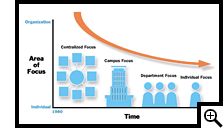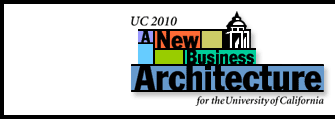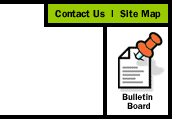


|
 |
|
 |
 |
The Role of a New Business Architecture
The business support structure of the University has changed dramatically over the past 20 years, reflecting the advances in technology that allow for new and better ways of doing business. During this time, UC transitioned from the centralized management structures of the 1980s to the network organization model of the 1990s — a change resulting from the need for doing more with less. That transition was well documented in "Sustaining Excellence in the 21st Century," a report that paved the way for the development of the University's internal and external networks.
Today, the University recognizes the need for a new framework for its business operations, one that focuses on the critical role of individual staff in delivering business and administrative services to the University. The New Business Architecture is more than a technology solution. It outlines a new work environment with operational principles, processes and tools designed to expand the productivity and effectiveness of the University's administrative staff.
 A new UC business architecture for the first decade of the 21st century will serve as a compass to navigate through a rapidly changing environment. It will create a context for setting priorities and for making administrative investment and allocation decisions. This new architecture will stimulate and guide follow-on initiatives to be spearheaded by the campuses, and contribute to more effective partnership relationships between the Office of the President and the UC campuses. A new UC business architecture for the first decade of the 21st century will serve as a compass to navigate through a rapidly changing environment. It will create a context for setting priorities and for making administrative investment and allocation decisions. This new architecture will stimulate and guide follow-on initiatives to be spearheaded by the campuses, and contribute to more effective partnership relationships between the Office of the President and the UC campuses.
Seen through the eyes of our faculty and staff, a new business model must:
- Be flexible and scalable in order to accommodate significant workload growth and complexity without compromising quality and service
- Reduce department workload by:
– simplifying policies and procedural requirements
– automating repetitive tasks
– increasing the "intelligence" designed into systems
- Reduce the time it takes to perform work, particularly those functions that deliver key services to external and internal customers.
- Make it easier for staff to learn quickly what they need to know in order to excel in their jobs and to stay current in their areas of expertise.
|
 |
| |
|
 |
|



